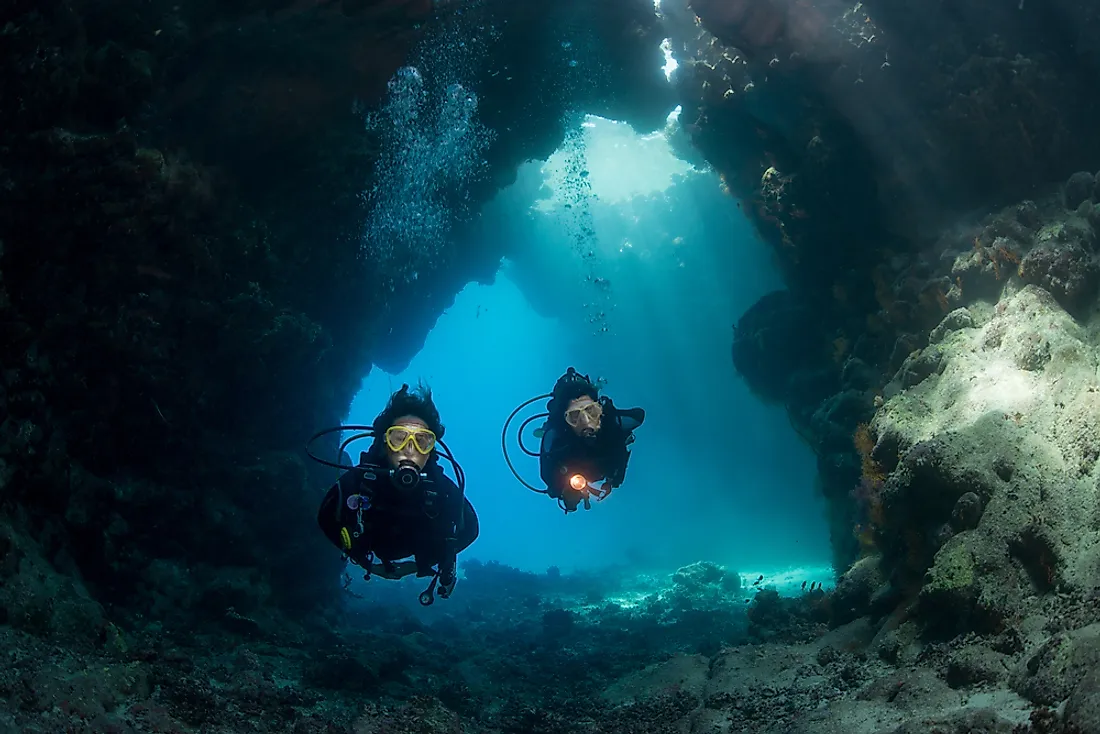How Much of the Ocean Have We Explored?

6. How Much Of The Ocean Is Still Unexplored?
Even though humans have explored and mapped large parts of the planet Mars and the moon in outer space, only a small part of the oceans of the world have been explored till now. It is said that humans have managed to explore only about 5% of the ocean floor. The remaining 95% of the ocean still remains a mystery. Why is deep sea exploration such an arduous task, considered by some experts to be more difficult than exploring outer space objects? In fact, more men have stepped on the surface of the moon than dived into the depths of the Mariana Trench in the Pacific Ocean, one of the deepest parts of the world’s oceans.
5. Why Is The Exploration Of Oceans Important?
Oceans occupy 70% of the total surface area of the Earth and over 90% of the living space on the planet. In fact, all species of terrestrial fauna are exceptions in the world of oceanic creatures. Oceans influence climate and weather phenomena on land, and a large number of oceanic flora and fauna are important sources of food for humans. Oceans allow navigation between continents and countries of the world, and about half of the population of the world live within the coastal zone. Understanding the world’s oceans is thus extremely important for our benefit. The changes in the Earth’s oceans will directly affect our life on land, and it is thus necessary for us to detect such changes at the earliest.Besides increasing our knowledge of the oceans for our safety and economic gains, exploration of the ocean floor will also satisfy the curious human mind and our thirst for knowledge of the unknown.
4. Mysteries Of The Deep Sea
Scientists and explorers believe that there is a great lot of mystery still to be unraveled in the depths of the world’s oceans. For example, the ocean’s host grand underwater waterfalls whose height often extends that of the 3,212 feet tall Angel Falls, the highest waterfall on Earth. Then, there are lakes on the ocean floor with depths of over 300 feet. It is believed these lakes host species that are found in no other part of the ocean. The sea floor also is highly undulating at a number of locations with mountain ranges and valleys. It is estimated that there are valleys in the sea floor that are deeper than those in the Grand Canyon. There is also an incredible variety of sea creatures yet to be discovered and classified. The amazing thing about sea life is the incredible biodiversity exhibited by the oceanic ecosystem. This is evident in the fact that 297 new species of sea creatures were discovered on a single volcanic rock column in the ocean.
3. Challenges Faced In Deep Sea Exploration
Deep sea exploration is a highly challenging activity and requires sophisticated equipment, large budgets, brave and experienced personnel, and permissions from governments at national and international levels.
Deep sea divers face a number of threats like the adverse physiological effects of high water pressure, threats from strange and dangerous sea creatures, failure of diving equipments, etc. Temperatures at the ocean floor also vary greatly. It can be near freezing at a certain location while the presence hydrothermal vents at other locations might raise the temperature of ocean to as high as 400 degrees Celsius. Visibility is often poor at great depths in the ocean and pitch black darkness prevails. Such qualities of the deep oceans subject both divers and deep submersibles to extreme stress. Even a small crack in the hull of a submersible can cause it to crack like a paper cup at great depths in the ocean.
2. How Much Of The Ocean Has Been Explored Till Now?
Some experts believe that the claim that only 5% of the ocean floor has been mapped, leaving 95% of the ocean floor unmapped, is not completely accurate. In fact, the entire ocean floor has been mapped to a maximum resolution of approximately 5 km which means that all features on the ocean floor that are larger than 5 km across have been mapped. However, it is true that a full, detailed mapping of the ocean floor is still missing. In the case of Venus, 98% of the surface of the planet has been mapped to a resolution of around 100 meters. However, only 10% to 15% of the ocean floor has been mapped to this resolution.
Unlike land features which are mapped by using radar transmitted by satellites, the ocean floor needs to be measured by other means. The ocean water blocks the radio waves making measurements by this means inaccurate. However, it is possible to measure the height of the sea surface using satellites. Using sophisticated mathematical calculations, if the ocean surface height variances due to waves and tides can be subtracted, the dips and bumps on the ocean surface that are influenced by landscapes on the ocean floor can be accurately measured. For example, in places with large mountains on the seafloor, the slight increase in local gravity due to the mass of the mountain will pull seawater to form a slight bump over the feature. This will increase the surface height of the sea at such places.
1. Future Technologies To Explore The Oceans
A switch in technology from satellite to sonar detection is currently needed to map the ocean floor in greater detail. Modern sonar detection systems can create maps of the ocean floor with resolutions of around 100 meters. Using this technology 10% to 15% of the ocean floor has been mapped. However, to detect objects and features on the sea floor to even greater resolutions, sonar detection needs to be carried out from a closer distance to the seabed. Underwater vehicles or towed instruments can be useful in this regard.











